- Home
- D. H. Lawrence
Women in Love (Barnes & Noble Classics Series)
Women in Love (Barnes & Noble Classics Series) Read online
Table of Contents
FROM THE PAGES OFWOMEN IN LOVE
Title Page
Copyright Page
D. H. LAWRENCE
THE WORLD OF D. H. LAWRENCEAND WOMEN IN LOVE
Introduction
Foreword
CHAPTER I - Sisters
CHAPTER II - Shortlands
CHAPTER III - Class-Room
CHAPTER IV - Diver
CHAPTER V - In the Train
CHAPTER VI - Crème de Menthe
CHAPTER VII - Totem
CHAPTER VIII - Breadalby
CHAPTER IX - Coal-Dust
CHAPTER X - Sketch-Book
CHAPTER XI - An Island
CHAPTER XII - Carpeting
CHAPTER XIII - Mino
CHAPTER XIV - Water-Party
CHAPTER XV - Sunday Evening
CHAPTER XVI - Man to Man
CHAPTER XVII - The Industrial Magnate
CHAPTER XVIII - Rabbit
CHAPTER XIX - Moony
CHAPTER XX - Gladiatorial
CHAPTER XXI - Threshold
CHAPTER XXII - Woman to Woman
CHAPTER XXIII - Excurse
CHAPTER XXIV - Death and Love
CHAPTER XXV - Marriage or Not
CHAPTER XXVI - A Chair
CHAPTER XXVII - Flitting
CHAPTER XXVIII - In the Pompadour
CHAPTER XXIX - Continental
CHAPTER XXX - Snowed Up
CHAPTER XXXI - Exeunt
ENDNOTES
INSPIRED BY D. H. LAWRENCE AND WOMEN IN LOVE
COMMENTS & QUESTIONS
FOR FURTHER READING
FROM THE PAGES OF
WOMEN IN LOVE
There was a long pause, whilst Ursula stitched and Gudrun went on with her sketch. The sisters were women. Ursula twenty-six, and Gudrun twenty-five. But both had the remote, virgin look of modern girls, sisters of Artemis rather than of Hebe.
(page 6)
She craved for Rupert Birkin. When he was there, she felt complete, she was sufficient, whole. For the rest of time she was established on the sand, built over a chasm, and, in spite of all her vanity and securities, any common maid-servant of positive, robust temper could fling her down this bottomless pit of insufficiency, by the slightest movement of jeering or contempt. And all the while the pensive, tortured woman piled up her own defences of aesthetic knowledge, and culture, and world-visions, and disinterestedness. Yet she could never stop up the terrible gap of insufficiency.
(page 15)
“Humanity doesn’t embody the utterance of the incomprehensible any more. Humanity is a dead letter. There will be a new embodiment, in a new way. Let humanity disappear as quick as possible.”
(pages 56-57)
Really, what a mistake he had made, thinking he wanted people, thinking he wanted a woman.
(page 106)
“Love isn’t a desideratum—it is an emotion you feel or you don’t feel, according to circumstance.”
(page 128)
His soul was arrested in wonder. She was enkindled in her own living fire. Arrested in wonder and in pure, perfect attraction, he moved towards her. She sat like a strange queen, almost supernatural in her glowing smiling richness.
(page 129)
Ursula was deeply and passionately in love with Birkin, and she was capable of nothing.
(page 189)
It was intolerable, this possession at the hands of woman. Always a man must be considered as the broken-off fragment of a woman, and the sex was the still aching scar of the laceration. Man must be added on to a woman, before he had any real place or wholeness.
(page 200)
She believed that love was everything. Man must render himself up to her. He must be quaffed to the dregs by her. Let him be her man utterly, and she in return would be his humble slave—whether she wanted it or not.
(page 265)
“There is such a thing as two people being in love for the whole of their lives—perhaps. But marriage is neither here nor there, even then. If they are in love, well and good. If not—why break eggs about it!”
(page 290)
“One should avoid this home instinct. It’s not an instinct, it’s a habit of cowardliness. One should never have a home.”
(page 354)
“Why does every woman think her aim in life is to have a hubby and a little grey home in the west?”
(page 377)
She lay and looked at him, as he slept. He was sheerly beautiful, he was a perfect instrument. To her mind, he was a pure, inhuman, almost superhuman instrument. His instrumentality appealed so strongly to her, she wished she were God, to use him as a tool.
(page 419)
“Aren’t I enough for you?”
(page 484)
Published by Barnes & Noble Books
122 Fifth Avenue
New York, NY 10011
www.barnesandnoble.com/classics
Women in Love was first published in 1920.
Published in 2005 by Barnes & Noble Classics with new Introduction, Notes, Biography, Chronology, Inspired By, Comments & Questions, and For Further Reading.
Introduction, Notes, and For Further Reading
Copyright © 2005 by Norman Loftis.
Note on D. H. Lawrence, The World of D. H. Lawrence and
Women in Love, and Inspired by D. H. Lawrence and
Women in Love, and Comments & Questions
Copyright © 2005 by Barnes & Noble, Inc.
All rights reserved. No part of this publication may be reproduced or
transmitted in any form or by any means, electronic or mechanical,
including photocopy, recording, or any information storage and
retrieval system, without the prior written permission of the publisher.
Barnes & Noble Classics and the Barnes & Noble Classics
colophon are trademarks of Barnes & Noble, Inc.
Women in Love
ISBN-10: 1-59308-258-4 ISBN-13: 978-1-59308-258-1
eISBN : 978-1-411-43354-0
LC Control Number 2005920896
Produced and published in conjunction with:
Fine Creative Media, Inc.
322 Eighth Avenue
New York, NY 10001
Michael J. Fine, President and Publisher
Printed in the United States of America
QM
3 5 7 9 10 8 6 4 2
D. H. LAWRENCE
David Herbert Lawrence was born on September 11, 1885, in Eastwood, a coal-mining town in Nottinghamshire, England, the fourth child of a couple whose marriage Lawrence later described as “one carnal, bloody fight.” Lawrence’s psychologically intimate relationship with his mother would serve as the grounds for many of his novels. Lawrence studied to be a teacher but became interested in the arts. Jessie Chambers, a school love interest, submitted a number of Lawrence’s early poems to Ford Hermann Hueffer [Ford Madox Ford], editor of the English Review, and he published them. This first exposure would prove to be fruitful, and Lawrence soon published several novels, including The White Peacock (1911) and The Trespasser (1912), as well as Love Poems and Others (1913).
Lawrence gained fame and notoriety in 1913 with the publication of Sons and Lovers, a novel that was criticized by some as being too overtly sexual. Sons and Lovers was followed by The Rainbow (1915), a story of two sisters growing up in northern England that was banned upon its publication for its alleged obscenity. Women in Love, the sequel to The Rainbow, was published in 1920. His novel Lady Chatterley’s Lover (1928) was pronounced obscene and banned in the United Kingdom and America. Despite the censorship, Lawrenc
e remained unapologetic for creating “art for my sake.” His personal life, including his elopement with Frieda von Richthofen Weekley, wife of one of his professors and the mother of three children, fueled the aura of scandal that followed him throughout his career.
Despite censorship and other setbacks, in his exceptionally prolific literary career Lawrence authored more than a dozen novels, three volumes of stories and three volumes of novellas, an immense collection of poetry, and numerous works of nonfiction. He also wrote eight plays, most of which have been forgotten. The Lawrences traveled widely, but as Lawrence’s health worsened they settled in the south of France, where the author died on March 2, 1930. His ashes lie in a memorial chapel at his ranch in New Mexico.
THE WORLD OF D. H. LAWRENCE
AND WOMEN IN LOVE
1885 David Herbert Lawrence is born on September 11 in Eastwood, Nottinghamshire, a working-class mining town in central England. The sickly Lawrence is confined to bed for much of his early childhood and grows close to his mother, who tends to him.
1898-1901 Lawrence attends Nottingham High School on a scholarship, then takes a job as a clerk in a surgical appliance factory. His brother, William Ernest, dies in October 1901. Lawrence suffers an attack of pneumonia and leaves his job.
1902-1906 Lawrence takes a part-time teaching job at the British Schools in Eastwood and attends a teacher-training center in Ilkeston.
1906 Lawrence enrolls at University College, Nottingham, to get his teacher’s certificate; he leaves after two years.
1909-1910 The English Review publishes several of Lawrence’s poems. His mother, Lydia, dies in December 1910; Lawrence assists her by administering an overdose of morphine.
1911 Lawrence’s first novel, The White Peacock, is published.
1912 Lawrence and Frieda von Richthofen, the wife of Lawrence’s former Nottingham professor Ernest Weekley and cousin of famous aviator Manfred von Richthofen (also known as the “Red Baron”), run away to Germany and Italy. Lawrence’s second novel, The Trespasser, is published.
1913 Rejected at first by Heinemann Publishers, the autobiographical Sons and Lovers is published. Criticized for his graphic depiction of sexual relations, Lawrence defends himself by stating that “whatever the blood feels, and believes, and says, is always true.”
1914 World War I breaks out. Lawrence and Frieda marry on July 13. Unable to obtain passports, for the duration of the war they are forced to live in various places in England, including Cornwall and Derbyshire, where they share a house with John Middleton Murry and the writer Katherine Mansfield.
1915 Upon the publication of The Rainbow, Lawrence is prosecuted for his graphic descriptions of sex, and the novel is suppressed. More than 1,000 copies of the book are burned.
1916 Lawrence is introduced to Lady Ottoline Morrell, the wife of a liberal member of Parliament, and she becomes one of his most important patrons. Through her, Lawrence forms acquaintanceships with Aldous Huxley, E. M. Forster, and Bertrand Russell. Lawrence writes Women in Love, the sequel to The Rainbow.
1917 Lawrence and Frieda are suspected of being spies for the Germans.
1919 The Lawrences journey throughout Europe, stopping in Sicily, Sardinia, and Switzerland.
1920 Lawrence publishes The Lost Girl and also publishes Women in Love in New York.
1921 Women in Love is published in London. Movements in European History, Lawrence’s first major nonfiction work, is published, as is his Psychoanalysis and the Unconscious.
1922 Aaron’s Rod, a novel that reflects the influence of Friedrich Nietzsche on Lawrence, is published. The Lawrences travel to Ceylon and Australia, where Aaron’s Rod is set. James Joyce’s Ulysses and T. S. Eliot’s The Waste Land are published.
1923 Lawrence publishes his novel Kangaroo. He and Frieda visit Mexico as well as New York and Los Angeles. Studies in Classic American Literature—in which Lawrence considers Benjamin Franklin, Nathaniel Hawthorne, Herman Melville, Walt Whitman, and others—is published.
1924-1925 Mabel Dodge Luhan, a New York socialite, gives the Lawrences her Kiowa Ranch in Taos, New Mexico, in return for the original manuscript of Sons and Lovers. Lawrence’s father, Arthur, dies. While visiting Mexico City, Lawrence falls ill with tuberculosis and is forced to return to England.
1925-1926 The Lawrences settle near Florence. Frieda begins an affair with Angelino Ravagli, a former Italian infantry officer whom she will marry in 1950. Lawrence visits his hometown of Eastwood for the last time. The Plumed Serpent, a political novel about Mexico and a revival of its ancient Aztec religion, is published.
1928 Lady Chatterley’s Lover is published; it is banned in the United Kingdom and the United States, creating a great demand for the book.
1929 Lawrence’s Expressionist paintings, for which he gains posthumous renown, are declared obscene and confiscated from an exhibition at London’s Warren Gallery.
1930 Lawrence succumbs to tuberculosis on March 2 in Vence, France. Frieda moves to Kiowa Ranch, New Mexico, where she builds a small memorial chapel that houses Lawrence’s ashes.
1960 An unexpurgated version of Lady Chatterley’s Lover is published after Penguin Books is acquitted of obscenity charges brought under the Obscene Publications Act. The trial lasts six days; the thirty-five expert witnesses called to testify include E. M. Forster.
INTRODUCTION
The Reinvention of Love
According to theologian and scholar C. S. Lewis, in his book The Allegory of Love, the history of romantic love dates back only to about the year 1000 A.D. Even if Lewis is just referencing the origins of true love as a tradition, it is still quite an extravagant claim. After all, we know from history, earlier literature, and even the Bible that the emotion we call love certainly existed as far back as we can document. Even certain animals, like some birds, mate for life, a fact that cannot be accounted for by reproductive instincts alone. Yet love, as portrayed in classical literature, is a very disruptive emotion, often linked, as it is in Hamlet, with madness. In earlier times, it would have been unthinkable, as it still is in some regions of the world even today, for one to marry just because one claimed to be in love. According to Lewis, the troubadours, medieval poets from southern France and northern Spain and Italy, began the process of validating romantic love. They went from castle to castle serenading the ladies of the place with poems that begged for “mercy” that their “suffering” might be eased.
Italian poet Dante Alighieri was a great exponent of romantic love. In The Divine Comedy, Dante literally goes through Hell for Beatrice, the woman he loves. Then he goes through Purgatory and Heaven. At the end of this emotional and spiritual journey, the poet is rewarded with a vision of a blinding sun, symbolizing God and perfect understanding. It is not unfair to say that, after the appearance of The Divine Comedy, romantic love began to take on a new status in the Western world. It eventually became acceptable to marry on the basis of one’s emotions for a particular person, though of course this did not happen overnight. The tradition of true love during Dante’s time remained essentially an adulterous one. Dante never married Beatrice, and he himself was married to somebody else. Even three centuries later, Shakespeare’s Romeo and Juliet were having a hard time of it, though thanks to an amiable priest who took pity on the young lovers, they succeeded in marrying. Predictably, they experienced tragedy afterward.
Gradually, however, romantic love triumphed, and its influence remains very much intact to this day. This is not to say that everyone has been in perfect agreement with the progress of romantic love. During the twentieth century, in particular, some of the components of true love began to be called into question. Danish theologian Søren Kierkegaard, in his existentialist masterwork Either/Or, begins to question the sincerity of an eternal love. May it not, Kierkegaard enquired, be more sincere, instead of pledging to love your beloved forever and forever and forever, to vow to love her until Easter or May Day, and if that works out, to renew the vow until Christmas? In contemporary pop
ular culture, Tina Turner takes this a step further by asking, in her wildly successful song, “What’s Love Got to Do with It?” However, this does not necessarily mean that true love has fallen from its pedestal but only that it has had to contend with certain heresies and palace uprisings.
As with any tradition, things can become a bit stale. As Samuel Beckett put it, “Habit is a great deadener.” D. H. Lawrence completed Women in Love in 1916, just about the time romantic love was getting a little frayed around the edges. There are several things that influenced Lawrence in writing this novel. One major factor was that Lawrence himself was very much in love. In 1912 he had met Frieda Weekley, then married to Ernest Weekley, Lawrence’s former professor, to whom Lawrence had gone for help in finding a teaching position abroad. Lawrence and Frieda fell in love, and he convinced her to go away with him—for life. Another influence was England itself, which Lawrence found repressive, its traditions worn out, its emotional, spiritual, and political life stale and unedifying. There was yet another influence, which does not appear to be recorded, nor is it clear the extent to which Lawrence himself was aware of it. We know from Lawrence’s friend Jessie Chambers that the two read Symbolist poetry together. When Lawrence was working for his teaching degree, he studied French literature at the University of Nottingham under Ernest Weekley. Lawrence mentions specifically the poetry of Paul Verlaine in Sons and Lovers. Nowhere, though, it seems, does Lawrence speak directly of the poetry of Arthur Rimbaud, and yet among all the Symbolists, it is Rimbaud’s ideas that seem closest to those of Lawrence. Rimbaud wrote these lines, which coincide with Lawrence’s attitude about modern love, particularly as it relates to his own writing of Women in Love: “I do not like women: love must be reinvented, that’s obvious. A secure position is all they’re capable of desiring now. Security once gained, heart and beauty are set aside: cold disdain alone is left, the food of marriage today” (Rimbaud, “Delirium I,” p. 39; see “For Further Reading”).

 Look! We Have Come Through!
Look! We Have Come Through!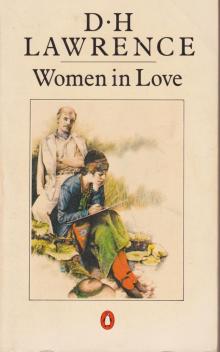 Women in Love
Women in Love The Ladybird
The Ladybird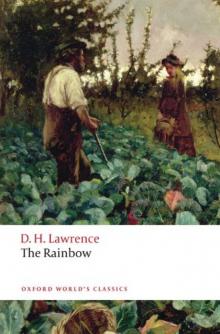 The Rainbow
The Rainbow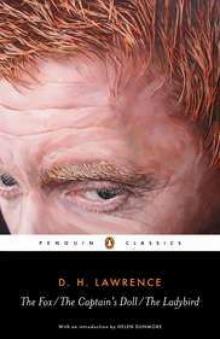 The Captain's Dol
The Captain's Dol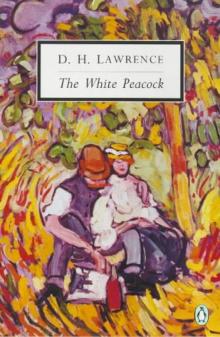 The White Peacock
The White Peacock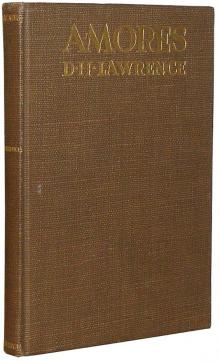 Amores
Amores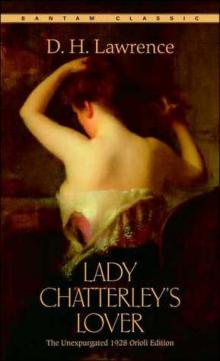 Lady Chatterley's Lover
Lady Chatterley's Lover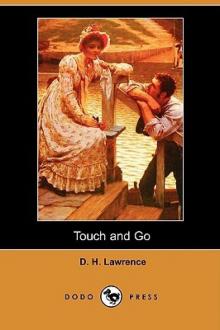 Touch and Go
Touch and Go The Wintry Peacock
The Wintry Peacock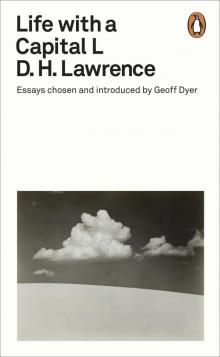 Life with a Capital L
Life with a Capital L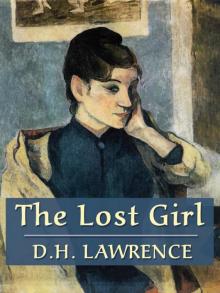 The Lost Girl
The Lost Girl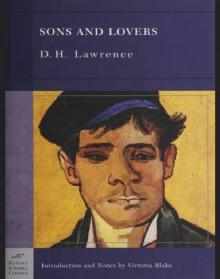 Sons and Lovers
Sons and Lovers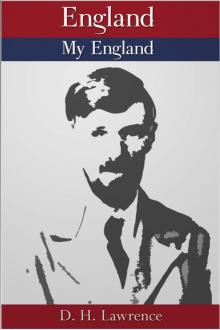 England, My England
England, My England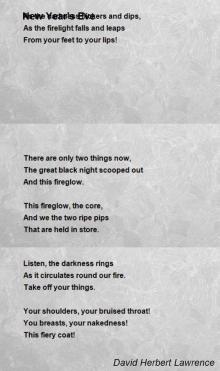 New Poems
New Poems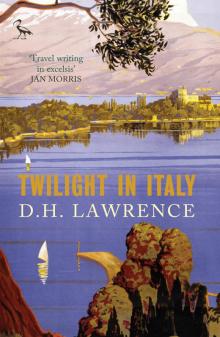 Twilight in Italy
Twilight in Italy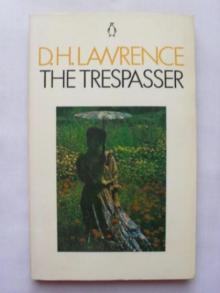 The Trespasser
The Trespasser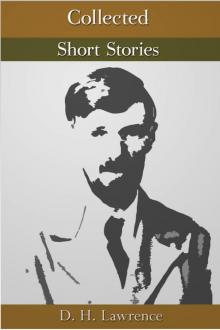 The Collected Short Stories
The Collected Short Stories The First Lady Chatterley's Lover
The First Lady Chatterley's Lover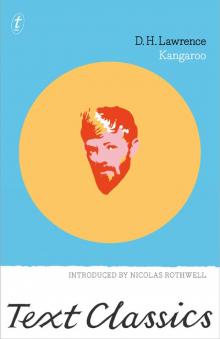 Kangaroo
Kangaroo Bay
Bay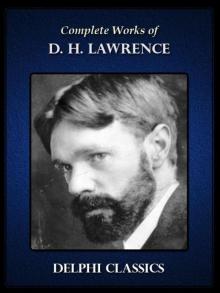 Complete Works of D.H. Lawrence
Complete Works of D.H. Lawrence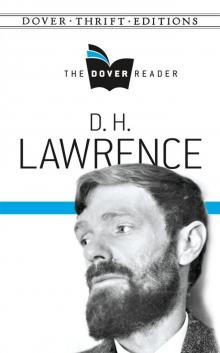 D H Lawrence- The Dover Reader
D H Lawrence- The Dover Reader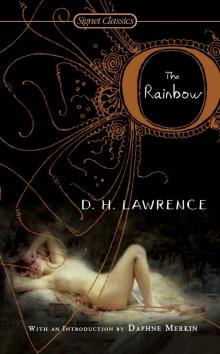 The Rainbow (100th Anniversary ed.)
The Rainbow (100th Anniversary ed.)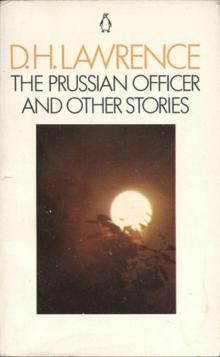 The Prussian Officer
The Prussian Officer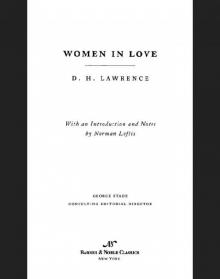 Women in Love (Barnes & Noble Classics Series)
Women in Love (Barnes & Noble Classics Series)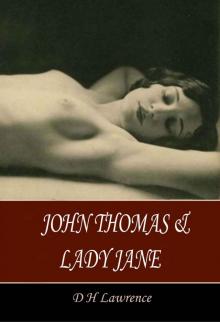 John Thomas and Lady Jane
John Thomas and Lady Jane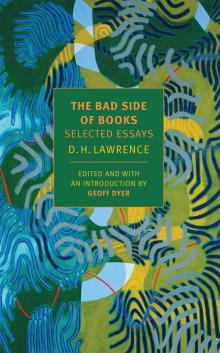 The Bad Side of Books
The Bad Side of Books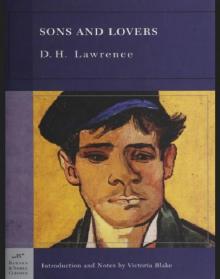 Sons and Lovers (Barnes & Noble Classics Series)
Sons and Lovers (Barnes & Noble Classics Series)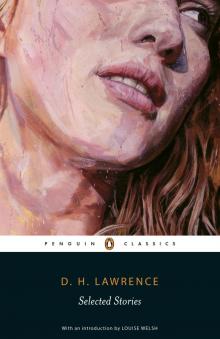 Selected Stories
Selected Stories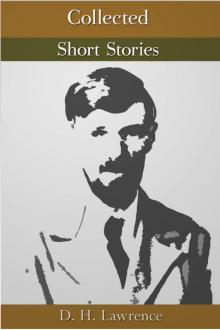 Collected Short Stories
Collected Short Stories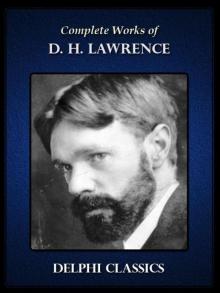 Complete Works of D.H. Lawrence (Illustrated)
Complete Works of D.H. Lawrence (Illustrated)